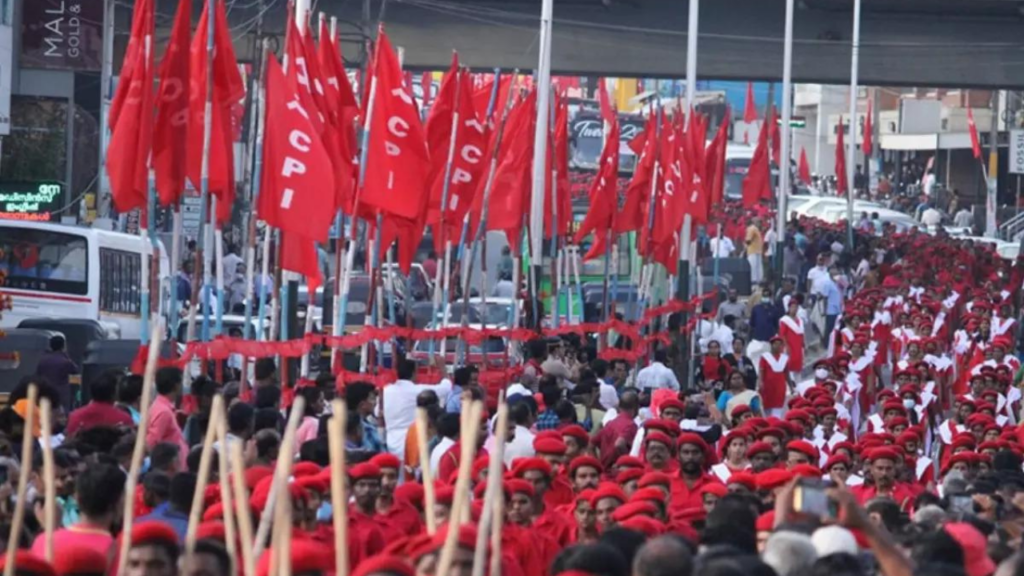With the identity quotient for Adivasis getting electoral prominence and political economic character of the labour force undergoing a major shift from the traditional features, the left parties in Jharkhand appear to be losing ground as is manifest from the votes they could poll. Both CPI and CPI(M) contested nine seats each but both failed to open their accounts. Their share of votes were: Communist Party of India 491689 votes, 2.08 per cent, Communist Party of India (Marxist) 159906 votes and 0.67 per cent. Even Communist Party of India (Marxist-Leninist) (Liberation) with 559126 votes, and vote share 2.37 per cent could manage to win two seats, Nirsa and Sindari.
While CPI-ML was with INDIA bloc, both CPI and CPM walked out of the alliance. Undeniably both these parties were active in the coal belt some three decades back and commanded significant following, but in recent times, the sign boards literally identified the parties. There is no denying that the CPI(ML)-L has of late emerged as the public face of the left forces in Jharkhand. After the results were out, the CPM state secretary Prakash Viplav had told media; “There is no doubt that our performance was not good. The election had become a fight between the INDIA bloc and NDA, so our votes also got diverted.” He nevertheless expressed happiness at the victory of secular forces.
CPI district secretary Ajay Singh literally accused the INDIA bloc, precisely the JMM for not taking the CPI along. At a time when the issue of defeating the rightist and anti-Adivasi forces led by BJP and RSS had turned out to be defining strategy of choosing INDIA bloc candidates, the CPI and CPI(M) should have adopted a more pragmatic and realistic approach. The CPI claimed that its performance in the four seats of Simaria, Chatra, Daltonganj and Barkattha, where the victory margins of NDA were nominal, could have turned in its favour. But the fact is in Daltonganj its candidate could poll around 4200 votes in comparison to 102,000 of BJP and at Barkatta it candidate could fetch 2100 votes in contrast to nearly 80,000 votes of NDA.
Out of the four constituencies — Bagodar, Nirsa, Sindri, and Rajdhanwar — that CPI (ML) contested, the party secured victories in Nirsa and Sindri — which have a large number of industrial workers. Bagodar in a way has been the traditional seat of CPI(ML). In the past it was held by Mahendra Singh, a senior CPI(ML) leader. After his death, his son Vinod won from this seat. But this time he lost. Bagodar is a general constituency. In the 2019 polls, Vinod of CPI(ML) won the seat with 98,201 votes, defeating his nearest rival, Nagendra Mahto of BJP. IN this election Vinod was the runner-up with 70,559 votes.
The left place has been taken by CPI-ML-Liberation. But the CPI still continues to assert its significance by recalling that glorious history. Even after the CPI lost its electoral relevance, being the oldest communist party in India, it is given respect by other left parties. But the CPI and CPI(M) leadership ought to look at the ground realities. For being recognised as a viable left the party must have some sort of support base as well activities. Jharkhand CPI and CPI(M) parting ways with INDIA bloc has indeed been shocking. Since they believe that it is the fight for life and death for democracy, they must have stuck together.
Instead of fielding separate candidates, the left parties should have strengthened the Left Block and made it viable to exert its identity while bargaining for seats. It could made wide difference. In fact while the talks for seat sharing were taking place inside the INDIA bloc the JMM leadership, especially Hemant Soren was in favour of accommodating Left claim for ten seats, notwithstanding some opposition from inside. It is no secret that a significant number of JMM leaders are allergic to left. They opposed his move. Their argument was since they are unable to pull together how could they be trusted to help INDIA to entice voters. The situation was further aggravated by the internal feud in the left bloc.
For CPI(ML)-L losing Tarari seat has been a major setback. Tarari appears to be a direct showdown between CPI-ML and the BJP with both parties vowing to secure victory. CPI-ML has held this seat for the last two terms and eyed a hat-trick this time. It is worth mentioning that Tarari which was earlier a part of Sahar constituency, had witnessed severe bloody fight between the Naxalites and landlords over right to vote.
This election was necessitated after CPI-ML’s Sudama Prasad was elected to the Lok Sabha this year. CPI-ML has nominated Raju Yadav while the BJP fielded Vishal Prashant, son of the local don Sunil Pandey, who has over a dozen criminal cases pending against him. Otherwise too, the constituency has sizeable population of upper castes; Bhumihar 70,000, followed by EBC 45,000, Yadavs 30,000, Muslims 25,000, Brahmins 30,000, Rajputs 20,000 and Kushwahas 15,000.
Just ten days before election CPI( ML)-L general secretary Dipankar Bhattacharya had led a major roadshow in Tarari assembly constituency in support of his candidate. Addressing the gathering, Bhattacharya said, “One can see the change in BJP’s election strategy this time in Tarari. In 2020, BJP claimed it would not ally with criminal elements, but now the party is openly colluding with such forces to win by any means. Their leaders’ provocative language shows their frustration after losing the last Lok Sabha election with Sudama Prasad winning as Ara MP.”
One development was quite noticeable that the rightist forces and rich people have put their best efforts this time to ensure the defeat of the CPI(ML)-L in Jharkhand as well in Bihar. CPI(ML) general secretary Dipankar Bhattacharya was candid in his observation; “the landlords and feudal people Tarari had come together to take the revenge of their defeat in the Lok Sabha election. We nonetheless could not mobilise our resources and that is why we lost the seat. We probably would have taken the election more seriously”.
Dipankar is quite emphatic that the Jharkhand victory will prove to be a major political turning point in the fight against communal and divisive forces. Rejecting the rightist forces by the Adivasis would send a positive message across the country. What was most significant for Jharkhand was coming together of Adivasis and Muslims to strengthen the anti-communal forces. This would prove to be a major and significant political gain. This growing electoral support for INDIA actually reflects a strong popular desire for change. (IPA Service)

 Hemant’s Arrest By ED Irked Voters, Generated Sympathy For JMM
Hemant’s Arrest By ED Irked Voters, Generated Sympathy For JMM 